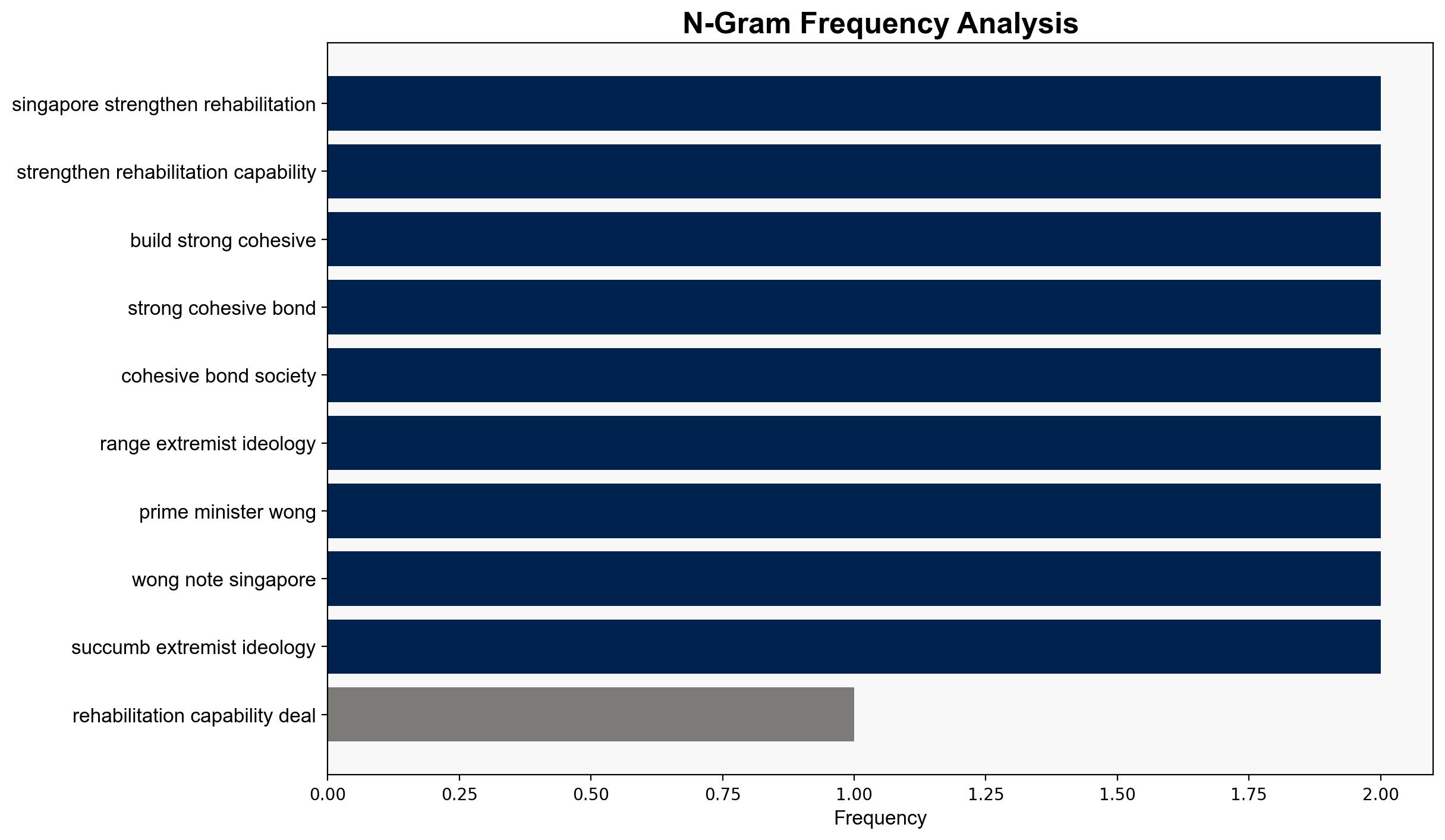Singapore will strengthen rehabilitation capabilities to deal with rising self-radicalisation Lawrence Wong – CNA
Published on: 2025-09-13
Intelligence Report: Singapore will strengthen rehabilitation capabilities to deal with rising self-radicalisation Lawrence Wong – CNA
1. BLUF (Bottom Line Up Front)
Singapore is proactively enhancing its rehabilitation capabilities to address the increasing threat of self-radicalisation, with a focus on building societal cohesion and international cooperation. The most supported hypothesis is that Singapore’s strategy will effectively mitigate self-radicalisation risks through comprehensive community engagement and targeted interventions. Confidence level is moderate due to the evolving nature of digital radicalisation. Recommended action includes bolstering cyber-monitoring and expanding community-based programs.
2. Competing Hypotheses
1. **Hypothesis A**: Singapore’s enhanced rehabilitation capabilities and community engagement will significantly reduce self-radicalisation incidents.
– **Supporting Evidence**: The government’s commitment to strengthening societal bonds and tailored interventions for at-risk youth, as well as successful past cases of rehabilitation.
– **SAT Applied**: ACH 2.0 suggests a strong correlation between community cohesion efforts and reduced radicalisation.
2. **Hypothesis B**: Despite efforts, the rise of digital radicalisation will continue to pose a significant threat, potentially outpacing rehabilitation measures.
– **Supporting Evidence**: The increasing accessibility of extremist content online and the complexity of digital platforms in spreading radical ideologies.
– **SAT Applied**: Bayesian Scenario Modeling indicates a persistent risk due to the dynamic nature of online radicalisation channels.
3. Key Assumptions and Red Flags
– **Assumptions**: It is assumed that community engagement and rehabilitation programs will be adequately funded and effectively implemented. Another assumption is the continued cooperation from international partners.
– **Red Flags**: The rapid evolution of digital platforms could undermine current strategies. There is also a potential over-reliance on community programs without addressing underlying socio-economic factors.
4. Implications and Strategic Risks
– **Implications**: Successful implementation could serve as a model for other nations facing similar threats. However, failure to adapt to digital trends could result in increased radicalisation incidents.
– **Strategic Risks**: Potential for increased cyber threats and misinformation campaigns targeting vulnerable populations. Geopolitical tensions could arise if international cooperation falters.
5. Recommendations and Outlook
- Enhance cyber-monitoring capabilities to detect and counter online radicalisation efforts.
- Expand community-based programs to include digital literacy and resilience training.
- Scenario Projections:
- Best Case: Significant reduction in self-radicalisation incidents through effective community and cyber interventions.
- Worst Case: Escalation of radicalisation due to inadequate adaptation to digital threats.
- Most Likely: Gradual improvement with ongoing challenges in the digital domain.
6. Key Individuals and Entities
– Lawrence Wong
– Muhammad Jihadul Mustaqiim Mahmud
– Charlie Kirk (mentioned as a case study in radicalisation)
7. Thematic Tags
national security threats, cybersecurity, counter-terrorism, regional focus




